#africa avant garde jazz
Text
Johnny Dyani – Witchdoctor’s Son
Johnny Dyani – Witchdoctor’s Son
South Africa, 1978, avant-garde jazz / cape jazz
Just a straight-up fun album, with a lot of variety to hold the listener’s interest, ending with a beautiful, meditative vocal track, complete with yelps and trills. A perfect album for those who like deep bass grooves that sustain a rich musical soil from which soloing can grow and flourish. I’ll say it again: this album is fun, the kind that’s…
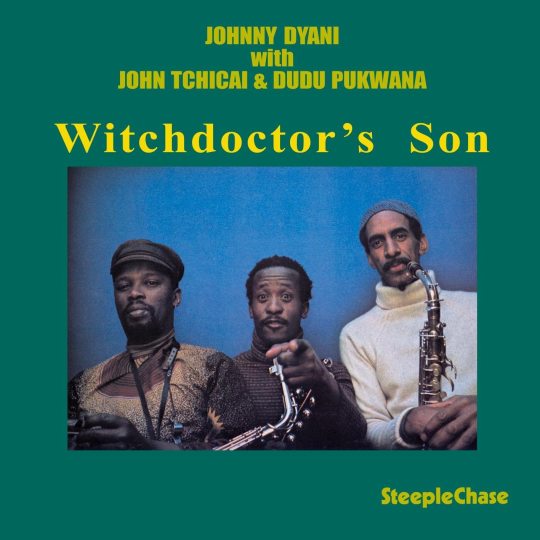
View On WordPress
0 notes
Text
Don Cherry's New Researches - Organic Music Theatre: Festival de jazz de Chateauvallon 1972
Don Cherry’s New Researches – Organic Music Theatre: Festival de jazz de Chateauvallon 1972

View On WordPress
#1970s#1972#Acoustic#Africa-Influenced#Alto Saxophone#Archival#Avant-Folk#Avant-Garde Jazz#Blank Forms#brazilian#Bright#Ceremonial#Christer Bothén#Colorful#Communal#Don Cherry#Donsi Ngoni#Doudou Gouirand#earthy#eclectic#Harmonium#Hindu#Improvisation#Indian-Influenced#Live#Moki Cherry#Morning#Mysterious#Mystical#Nana Vasconcelos
0 notes
Text
THIS DAY IN GAY HISTORY
based on: The White Crane Institute's 'Gay Wisdom', Gay Birthdays, Gay For Today, Famous GLBT, glbt-Gay Encylopedia, Today in Gay History, Wikipedia, and more … April 17


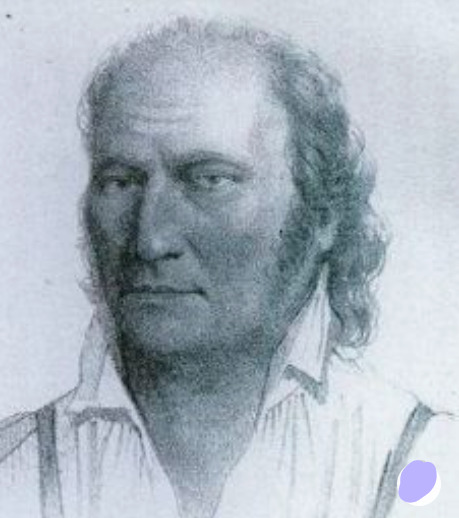
1725 – South Africa: Leendert Hasenbosch (c.1695–1725), a Dutch East India Company employee, is convicted of sodomy on a ship in Capetown. He’s left on Ascension Island as punishment and dies of thirst six months later. He kept a diary entitled Sodomy Punish’d which was published in 1726. In 2006 the full story was published by Alex Ritsema, with the support of Koolbergen’s family and publisher, in the book A Dutch Castaway on Ascension Island in 1725; a second, revised edition was printed in 2010.
1857 – Maine sets a one-year minimum for sodomy and eliminates the word "detestable" from the sodomy law.
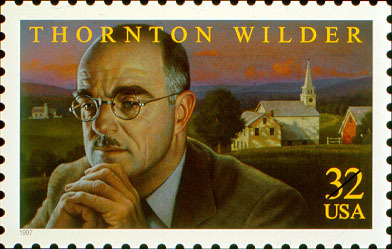
1897 – Born: Pulitzer Prize-winning American playwright and novelist Thornton Wilder (d.1975), a prolific writer prominent in twentieth-century literature. A discreet homosexual, his sexual proclivities were kept far out of the limelight. Wilder's mainstream literary works are landmarks of American literature, but they reveal scant traces of his homosexuality. He can be credited for acting as a behind-the-scenes ambassador for the Lost Generation, making their avant-garde themes accessible to a middle-brow American public.
Wilder was born in Wisconsin though he spent most of his boyhood in Berkeley, California. As an adolescent, Wilder isolated himself in academic projects. Wilder's entire family was one of achieving, industrious, self-reliant Congregationalists with a strong work ethic.His roving intellectual enthusiasms blossomed in his adolescence, especially his interest in theater. At fifteen the budding playwright was cast as Lady Bracknell in Oscar Wilde's The Importance of Being Earnest, but his strict father forbade this drag role. Later, Wilder delighted in playing central characters in his own plays, such as the Stage Manager in Our Town and Mr. Antrobus in The Skin of Our Teeth.
Wilder described himself as "The only writer of the Lost Generation who did not 'go' to Paris," a statement that was not literally true but which expresses his attachment to American life and values even as many of the writers of his generation yearned to escape what they saw as the stifling conformity of small-town life.
Wilder's warmest friendships included Gertrude Stein and Alice Toklas whom he met in Chicago in 1934. Through them he befriended many of the gay artists in their circle. For all the liberation of the Jazz Age and the period following, homosexuality was only discreetly discussed among writers of the Lost Generation.
Wilder seems to have been regarded even by his closest friends as a kind of Henry James figure, somewhat sheltered and cerebral, and frightened of sex. The relationship between Wilder and his one documented companion, Sam Steward, (aka Phil Andros) may have begun as a furtive sexual fling in Zurich in 1937. Steward, a writer, pornographer, tattoo artist, and one-time college professor, was, in pointed contrast to Wilder, open and adventurous. He wrote popular erotic gay works in the 1970s under the pseudonym Phil Andros. Wilder seems to have backed away from Steward after several awkward encounters. Intimate affection eventually became fond intellectual acquaintance.
Typical of some gay men of the era, Wilder preferred to play the role of the perennial Respectable Bachelor. Although he never publicly discussed his homosexuality, later in his life he is believed to have had discreet affairs with younger men. Despite his reticence concerning his sexuality, Wilder was a notably convivial man who enjoyed friendships with writers and actors and academics.
Wilder is the only writer to receive Pulitzer Prizes for both literature (The Bridge of San Luis Rey, 1927) and drama (Our Town, 1938; The Skin of Our Teeth, 1943).
During World War II, Wilder enlisted in the armed services, eventually becoming a Lieutenant Colonel in the Air Force. In the 1940s, Wilder also wrote the screenplay for Alfred Hitchcock's Shadow of a Doubt (1943).
After the war, he reworked an earlier play, The Merchant of Yonkers (1938), a comedy set in New York in the 1880s, that features the adventures of a neighborhood matchmaker, Dolly Levi, who eventually snares herself the perfect husband. It was not much of a success originally, but it became The Matchmaker (1955), a popular vehicle for Ruth Gordon, and it evolved into the even more popular Jerry Herman-Michael Stewart musical Hello, Dolly! (1964).
Thornton Wilder died on December 7, 1975. In Wilder's public and personal life, the "love that dared not speak its name" usually remained unspoken. One can only wonder whether he might have addressed more explicitly the question of homosexuality (and its repression) had he lived in a more tolerant time or place.

1919 – Chavela Vargas is a household name in Mexico but many North Americans aren’t privy to one of the most passionate performers of the last century. The queer masculine-presenting singer was prized for her tragic, tearful emoting — her songs appear in Pedro Almodovar films like Flower of My Secret.
A late bloomer, perhaps, but what a flower — Chavela Vargas did not release her first album until she was 42, didn't come out as a lesbian until she was 81, and didn't debut at Carnegie Hall until she was 83.
What was she doing all those years before recording Noche de Bohemia in 1961? Well, she dressed as a man, often in her signature red jorongo, smoked cigars, drank heavily, and packed a pistol, so obviously she was busy with more than singing rancheras in the streets. And maybe she had an affair with famed Mexican painter, Frida Kahlo (as Josephine Baker had).
Since that first record, she has released more than eighty albums. Her great fame of the 1960s and 70s subsided when she retired to battle her alcoholism. She returned to performing at 72 in 1991 in Mexico City. Since then her music has been widely used in films and she has appeared singing in several movies including Almodovar's Flower of My Secret, Julie Taymor's Frida, and Alejandro Innartu's Babel.
Buy her, beware: The first time you hear Chavela unleash her power midway through the quiet Paloma Negra you might drop whatever you're holding. She died in 2012 at 93.
youtube

Lindsay Anderson with Malcolm McDowell
1923 – Born: Film and stage director Lindsay Anderson (d.1994), a foundational figure in the "Free Cinema" movement of the 1950s, a group of British filmmakers who created low-scale realist works that focused on the ordinary or the socially marginalized, particularly the working class and the younger generation. A leader among such peers as Karel Reisz, Tony Richardson, Gavin Lambert, and John Schlesinger, Anderson was influential in shaping what now might well be considered the golden age of British cinema in the 1960s. Ironically, as a result of his independence and idealism, he directed relatively few major films, and both his professional and personal lives were affected by the repression and sublimation of his homosexuality.
Anderson was born in Bangalore, India, where his father was a captain in the British army. His family sent him to Cheltenham, an English private school, where he met his lifelong friend and colleague, Gavin Lambert, who like Anderson, was not only gay but would also enjoy a significant directorial career. Subsequently, Anderson attended Oxford University, where he specialized in Classics and later co-founded the film journal Sequence with Lambert. In his essays and reviews in Sequence and other journals, Anderson took aim against the conventions of contemporary British cinema, which tended to avoid controversy and favored the lives and loves of the upper middle class as its subject matter.
Anderson's first films were short semi-documentary studies, looking at the everyday activities of the lower classes. Yet while Anderson had paved the way for feature films about the lives of working-class individuals, such as those that Richardson, Reisz, and Schlesinger directed throughout the early 1960s, he left filmmaking in 1957, when he became a director at the Royal Court Theatre, London. In this capacity Anderson directed many major theatrical works, including the 1975 revival of Joe Orton's What the Butler Saw, the first unexpurgated performance of the play.
It was not until 1963, that he made his first feature film, This Sporting Life, which, in detailing the career of a young coal miner turned professional footballer, seemed to follow rather than lead then-current trends. As such, it was not a commercial success, yet it is significant inasmuch as its depiction of the frustration and the emotional and physical violence that characterize the lives of ostensibly heterosexual working-class men has an inescapable homoerotic undercurrent, as seen in the film's nude bathing scenes.
Many of these themes, although in a very different context, recur in Anderson's best known film, If... (1968). Set in a British private school--indeed, filmed at Cheltenham--the film explores the social fascism that is inculcated in such privileged institutions and ends with student rebels machine-gunning a school assembly. It is also noteworthy for its frank representation of homosexual relationships among the schoolboys.Although If... was well-received as a cinematic political statement in the zeitgeist of the late 1960s, Anderson's subsequent films, though often equally daring, fared less well. O Lucky Man! (1973), the second of a trilogy featuring the character Mick Travis, the protagonist of If... (played by Malcolm McDowell), is a rambling three-hour satire in the mode of Voltaire's Candide on the evils of military-industrial capitalism and scientific experimentation. Ambitious and idealistic, the film was nonetheless a commercial failure, and, as a result, Anderson had few offers or financial backers for subsequent film projects. The third film of the trilogy, the cult classic Britannia Hospital (1982), is a satire on the British national health service. During the 1970s and 1980s, Anderson continued to direct for the stage and directed a number of television plays.
On August 30, 1994, he died of a heart attack while in southern France. Despite Anderson's daring as a director, his recently published letters and Lambert's biography show a tormented man who struggled with his own sexuality. He tended to fall in love with his leading men, including Richard Harris, Albert Finney, and Malcolm McDowell, all of whom were heterosexual, married, and unattainable. His closest associates have speculated that his life was, for the most part, a celibate one. His films, in which homoerotic elements are often presented in a violent or disturbing manner, became the outlet for the desires he could not express in life.

1943 – Tommy Nutter (d.1992), was a British tailor, famous for reinventing the Savile Row suit in the 1960s.
Born in Barmouth, Nutter initially studied plumbing, and then architecture, but he abandoned both aged 19 to study tailoring at the Tailor and Cutter Academy.
In the early 1960s he joined traditional tailors Donaldson, Williamson & Ward. After seven years, in 1969, he joined up with Edward Sexton, to open Nutters of Savile Row at No 35a Savile Row. They were financially backed by Cilla Black and her husband Bobby Willis, Managing Director of the Beatles' Apple Corps Peter Brown, and lawyer James Vallance-White.
The business was an immediate success, as Nutter combined traditional tailoring skills with innovative design. He designed for the Hardy Amies range, and then for the man himself. His clients included his investors, plus Sir Roy Strong, Mick Jagger, Bianca Jagger and Elton John. Nutter himself was most proud of the fact that, for the cover of The Beatles' album Abbey Road in 1969, he dressed three out of the four: George Harrison elected to be photographed on the road-crossing in denims.
In the 1970s he branched out into ready to wear clothing, marketed through Austin Reed. In 1976 Sexton bought Nutter out of the Business. Sexton continued to run Nutters of Savile Row until 1983, when Nutter returned to the row with a ready to wear shop: "Tommy Nutter, Savile Row". (This new venture, which traded at No 19 Savile Row until Tommy's death, was backed by J&J Crombie Limited, who continue to own the "Tommy Nutter" trademark.)
In the 1980s, he described his suits as a "cross between the big-shouldered Miami Vice look and the authentic Savile Row." He created the clothing of The Joker worn by Jack Nicholson in the 1989 film Batman.
Nutter died in 1992 at the Cromwell Hospital in London of complications from AIDS.

1967 – About 150 people attended a public meeting in Wellington, New Zealand on 17 April 1967 to form a society to work for homosexual law reform. It called itself the Wolfenden Association, but it soon became the New Zealand Homosexual Law Reform Society. Lord Cobham, a former governor-general, was invited to become its patron. His letter to the society secretary, Jack Goodwin, declining patronage was blunt and expressed a common attitude:
'These people are mentally sick to as great an extent as, for example, people suffering from smallpox are sick. The whole problem of legalizing this offence seems to me to hinge upon the extent to which the disease is contagious.'

2013 – Marriage equality passes in the New Zealand Parliament 77-44.

14 notes
·
View notes
Text
316: Toto Bissainthe // Chante Haïti

Chante Haïti
Toto Bissainthe
1977, Arion
“These songs are mostly slave songs taken from the Vodou cult. They speak of the quotidian, of the suffering of exile, and the desire of Africa, not as a geographical place but as a mythical land of freedom. They express their resistance and their refusal: resistance to the colonizer, refusal of his politics, of his religion, of his culture, of his language.”
So begins Toto Bissainthe’s statement on the rear of Chante Haïti, her 1977 collaboration with a small combo of Antillean folk and French jazz musicians: vocalists Marie-Claude Benoît and Mariann Mathéus; percussionists Akonio Dolo and Mino Cinélu (Miles Davis, Weather Report, Gong); Patrice Cinélu on acoustic guitar; and Beb Guérin on the double bass. The songs indeed fuse the Vodou ritual of her native Haiti with the European avant garde sounds of her adopted milieu of Paris, where she had moved to pursue acting and found herself a de facto exile due to the political situation back home. Bissainthe had become a prominent figure in the French theatre, performing in new plays by Beckett and Genet and co-founding Les Griots, France’s first Black theatre company; by the late ‘70s, she was an acclaimed recording artist to boot. Her accomplishments made her a prominent figure in the Haitian diaspora and her activist streak is apparent throughout Chante Haïti, explicitly linking the grief and yearning for liberation in these traditional ceremonials with the country’s contemporary struggles.
Like many songs on the album, the Creole words of opener “Soley danmbalab” mourn the people's estrangement from Mother Africa, a crossing which can neither be reversed or repeated. It begins like a field recording, Bissainthe’s soulful, Miriam Makeba-esque voice set to a chorus of rattles and bells and gurgling masculine whispers. As the song develops, her melody wends like a stream through the dense jungle of percussion, dissonant bass, and counterpoint chanting. Eventually, Mino Cinélu’s arrangement becomes more free, the male chorus imploring the Oungan (a male Vodou priest) to intercede with the creator on the people’s behalf as the tune breaks down into an increasingly abstract bass and drum interplay, while the three female singers exchange birdlike vocal improvisations.
youtube
“Ibo Ogoun (Variations)” is even wilder, evoking a trance ritual, the spirits speaking in many tongues through the celebrants as they seek to summon Ogun, God of Iron and War, to lead the battle of liberation. One of the male percussionists times his tanbou beat so that it hits just as he sings certain notes, creating the illusion that he voice has suddenly lurched down an octave for a moment, almost like a DJ freaking a vocal sample. Bissainthe, Mathéus, and Benoît match the intense drumming with some crazy syncopations, sometimes talking, sometimes hissing and whispering, sometimes wailing and ululating.
Most of the album takes on a more meditative tact, anchored by Guérin’s plangent double bass. On the smoky “Papadanbalab,” an entreaty to the serpent creator Damballa to bear witness to the penury of his people, Bissainthe sways over a slinky jazz bass line, Patrice Cinélu adding mellow acoustic fusion licks. The song seems like a brief stopover in a Parisian club. But even the less overtly intense tracks pack plenty of musical interest. “Lamize pa dous” has this hypnotic rhythm that sounds exactly like a micro house beat—in fact, the first thing it made me think of was Ricardo Villalobos’ Alcachofa, or Animal Collective at their campfire ravingest. The song is about the moment of surrender to death, the winnowing of time represented by water encroaching on all sides, the realization too late that “we spend our lives trying to fill the sea with stones.”
Listening to a record like this, especially in light of Bissainthe’s note on the back excoriating the colonialist ethnographer who reduces Haitian folklore to “excitement and violence,” requires at least a smidgen of awareness from the white listener that Chante Haïti is not intended for them. The traditions it engages with are of deep spiritual significance to many Haitians, both in the ‘70s and today. But for those inside and outside the culture who are willing to approach it with respect, Chante Haïti is a fascinating fusion of Antillean and European musics, and a peek into a profound and secret history.
youtube
316/365
#toto bissainthe#haiti#haitian music#vodou#haitian vodou#vodou music#diaspora#spiritual jazz#Kréyol djaz#creole#'70s music#female singer#female musicians#protest music#music review#vinyl record
5 notes
·
View notes
Text

🎵 Amorphic Music in association with Africa Oyé and Melodic Distraction proudly present the legendary afrofuturist, avant-garde jazz musical ensemble, The Sun Ra Arkestra, live at the Invisible Wind Factory on Saturday the 12th of August 2023.
🎵 The Invisible Wind Factory will welcome guests into the Factory Garden from 3pm with live jazz, DJs and food all afternoon to build up for the main event starting at 7pm in their IWF’s Main Hall, ready to welcome the otherworldly Sun Ra Arkestra.
🎵 The Full Line Up:
1️⃣ The Sun Ra Arkestra (Live Performance).
2️⃣ Bop Kaballa (Live Performance).
3️⃣ SOULFULTIZ (DJ — Africa Oyé).
4️⃣ Nina Keh (DJ — Resonance FM).
5️⃣ Ranga (DJ — Melodic Distraction).
6️⃣ Nick Branton & Johnny Hunter Duo (Live Performance).
🎵 Read the article on our website for the link to tickets: https://www.TheLiverpudlian.com/post/amorphic-music-in-association-with-africa-oye-melodic-distraction-host-legendary-sun-ra-arkestra
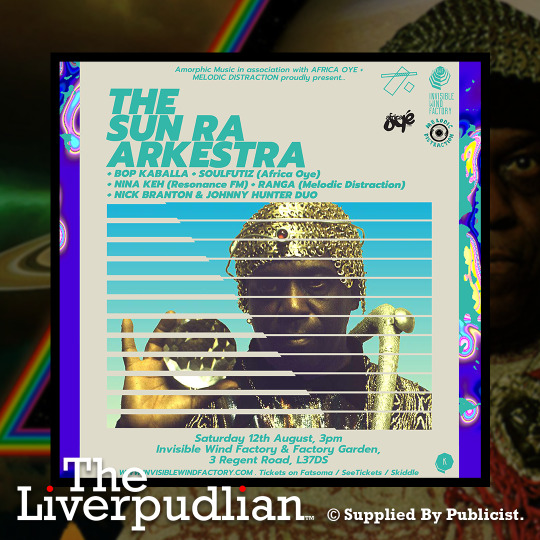
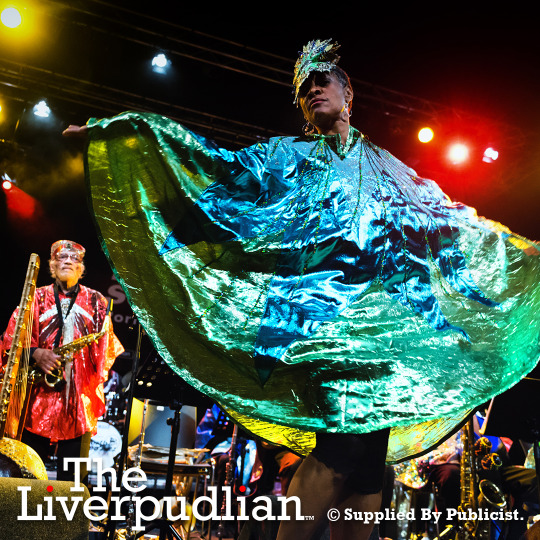
👉 Get all of the latest Scouse news, culture and events happening across the Liverpool City Region on TheLiverpudlian.com!
🔔 Turn notifications on so you never miss a post, story or video.
📲 Follow us on Instagram, Facebook, and YouTube to stay up-to-date on all of our posts!
📷 Image Credit: Supplied.
👋 The Liverpudlian on Social Media:
📰 The Liverpudlian Website.
📱 The Liverpudlian Instagram.
🧵 The Liverpudlian Threads.
🔗 The Liverpudlian Facebook.
🎥 The Liverpudlian YouTube.
📌 The Liverpudlian Pinterest.
🎙️ The Liverpudlian SoundCloud.
🐦 The Liverpudlian Twitter.
📷 The Liverpudlian Flickr.
⚙️️️ Trademark & Copyright 2023, The Liverpudlian, and/or its affiliated brands, unless credit is given otherwise. All Rights Reserved.
#the liverpudlian#theliverpudlian#liverpool city region#liverpool#liverpoolcityregion#liverpool city centre#liverpudlian#lcr#liverpoolcitycentre#scouse#jazz#sun ra#sun ra arkestra
4 notes
·
View notes
Text
Allah supreme: how Pharoah Sanders found freedom and rebellion in Islam | Pharoah Sanders | The Guardian
The day the music died was 24 September 2022. On that Saturday, the legendary tenor saxophonist Pharoah Sanders, a man who blew his horn “as if he was a dragon breathing fire”, passed on, at age 81. With his death came the end of a majestic era, a time of saxophone spirituality and musical mysticism that will probably never be surpassed or even replicated. Sanders, like so many of his generation, channeled spirit into song, drawing inspiration from a panoply of sacred sources.
For a while, younger hip-hop generations also found words and meaning in a similar kind of search, and the music –along with the quest – continued.
But jazz has changed and hip-hop has changed.

Never mind that only some of these artists adopted the faith itself. It was their notes and their tones that counted. Plaintive, modal, quarter-toned and chromatic, these aural landscapes of east and west and everything in between stretched the imaginations of both players and audiences. Inside the music, new alliances were forged between people and with all that was holy.
To some people, though, the music just seemed cacophonous and angry. White critics often didn’t understand. Even as astute a thinker as the English Marxist historian Eric Hobsbawm wrote, in 1959, that jazz’s “flight into Mohammedanism or some other non-white culture” was a way to “sidestep” a rising avant-garde jazz that was seeking white acceptance. Describing the era, Hobsbawm explained that “the marvelous political awakening of all the oppressed and underprivileged in Roosevelt’s America put a new tone into the jazz musician’s instrument: open resentment”.
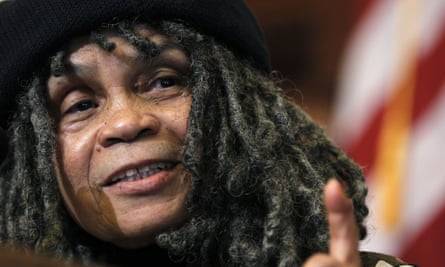
If all you heard during the long civil rights era was an endless blow of rage, you were missing out since you weren’t listening. The love was everywhere and all over the music. The piano player Ahmad Jamal told an interviewer: “I get my approach to life from the Holy Qur’an. I belong to the Ahmadiyya movement in Islam. Our motto is, ‘Love for all; hatred for none.’” (Many of the jazz musicians of that era came to Islam through the Ahmadiyya movement, a religious revivalist movement that began in late 19th-century India. It was led by Mirza Ghulam Ahmad, a charismatic reformer who believed he had received divine revelations that required him to promote the unity of all religions as manifest through Islam. Ahmadis came to the USA in the 1920s and found receptive audiences in African American communities.)
And it was a love supreme. I’ve argued elsewhere that Coltrane’s most famous song, A Love Supreme, has its own Islamic echoes (the chant “a love supreme” starts to sound a bit like “Allah supreme” after a while). Pharoah Sanders, who played with ’Trane starting in 1965, extended Coltrane’s legacy after his death in 1967.
Meanwhile, Sanders continued to build his own spiritually inflected, religious ecumenical style. His 1969 hypnotic track Hum-Allah-Hum-Allah-Hum-Allah meditates on the words “Prince of peace / Won’t you hear our pleas / And ring your bells of peace / Let loving never cease” for an enveloping and achingly beautiful 15 minutes. His classic The Creator Has a Master Plan had its own second coming when it was re-released in a trip-hop remix in the mid-90s. The Trance of Seven Colors, Pharoah’s work with the master Gnawa musician of Morocco Mahmoud Guinia is simply transcendent on an interstellar plane.
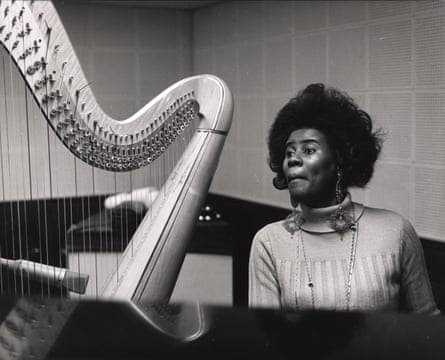
And it was a way of connecting to Africa. “The Christianity of the slave represented a movement away from Africa,” Amiri Baraka wrote in this classic text Blues People. “It was the beginning of Africa as ‘a foreign place’.” For the jazz musicians of this long and spiritual era, to reconnect with Africa was more than idle curiosity. It was a way of suturing back an essential part of you that had been forcibly torn from your collective body generations ago. By the mid-1950s and 1960s, African-themed events at nightclubs and restaurants in Brooklyn and Harlem abounded, with UN diplomats from newly independent African countries frequently dropping in. The jazz pianist and composer Randy Weston described the era: “Many of the African countries were just getting their independence. And the wonderful thing about being in New York, the United Nations is there. So I had an opportunity to meet many African diplomats. Many people from Kenya, from Nigeria, from Ghana, from Egypt, many parts of Africa. And I would always talk to them to try to understand a little more about the continent.”

Weston eventually relocated to Morocco for about five years and traveled throughout the African continent before returning to the USA in 1972. “I went on a spiritual trip back home,” he told DownBeat magazine in 1998, referring to Africa. “I wanted to hear where I came from, why I play like I play, why we play music like we do. We went to about 18 countries, and wherever we went we asked to experience the traditional music of the people. Hearing the traditional music was like hearing jazz and blues and the Black church all at the same time.”
Weston also joined forces with master Gnawa musicians in Morocco. (He was playing with them and learning from them before Sanders did the same.) Others, such as Alice Coltrane, were moving in more eastern directions while still others, like Sun Ra, lived in intergalactic space and called us all to move in with him.
The spiritual jazz movement continued, but it didn’t take long for it to be eclipsed by other trends, everything from commercially accessible fusion, launched by the likes of Miles Davis, to the less accessible avant-garde innovations of Cecil Taylor or Albert Ayler. By the 1990s, jazz was also firmly ensconced in the ivory tower, featuring at prestigious arts institutions such as Lincoln Center and the Kennedy Center.
Still, the Islamic influence in American popular music never went away, though it did change addresses. Shifting from sound to word, Muslim references could now be found more in the new hip-hop than in the new jazz, even if hip-hop Islam was a yet more heterodox creed than the one found within the Ahmadiyya community. Foundational hip-hop artists including Rakim, Big Daddy Kane, and the Wu-Tang Clan were invoking the words and numbers of the Nation of Gods and Earths, an offshoot of the Nation of Islam.

Five Percenter language has permeated the pop cultural lexicon. For example, the “G” in “wassup, G?”is not “gangsta”, as many might think, but “God”. In this creed, Five Percenter men are considered Gods, and Five Percenter women are known as Earths. “Dropping science” is a term from the Five Percenters, as is the emphatic term “word”, a short form of “word is my bond”.
Scholars have written on the important influence of Five Percenters on early hip-hop. But there are also other, more mainline Muslim influences on the American scene. Five Percenter doctrine was foundational in hip-hop, but it operated as an esoteric language among the educated and enlightened. The way the language and numerology (with an emphasis on the number 7) operated was to signify kinship and belonging, which was particularly important in the early hip-hop years. But other Muslim rappers, often associated with Sunni Islam, performed their deen, their faith, more in line with the jazz tradition that preceded it, as a search for self.

Mos Def is hardly the only one who invokes this devotional search. A Tribe Called Quest’s Q-Tip (Kamaal Fareed) is another. “Praise the Lord of the worlds that’s unseen / Respect me for that and let me do my thing,” we hear in the song Get a Hold. More recently, the Five Percenters, the Nation of Islam, and Sunni Islam (and more) tentatively unite to find a home in the lyrical power of Jay Electronica. “All I have in this world is my flag and my sword / I’m on the battlefield with the flag of my Lord,” rhymes Electronica in Fruit of the Spirit. “My shahada is my cantada / My heart chakra light up when I make sajda at fajr.”
While spiritual quests such as Jay Electronica’s aren’t as common in today’s hip-hop, the search hasn’t disappeared entirely. After all, the history of Black music shows us time and again how the journey seeking the divine produces such a profound musical experience.
And that’s what Pharoah Sanders leaves behind. His was an unyielding search for a way to transcend the secular ugliness of this world, and with his passing Sanders may have finally achieved that goal. Yet music – like all that is holy – never dies. And Pharoah’s saxophone will honk and shriek and envelop all our senses, reverberating to heaven and back, and maybe even beyond.
#Islam#Pharoah Sanders#how Pharoah Sanders found freedom and rebellion in Islam#Nation of Islam#5% Nation of Islam#Sunni Islam#Five Percenters#jay electronica#mos def#rakim big daddy kane#John Coltrane#St John Coltrane#Alice Coltrane
3 notes
·
View notes
Text
youtube
Pharoah Sanders, John Hicks, Curtis Lundy & Idris Muhammed - Africa
(1987, full album)
[Avant-Garde Jazz, Post-Bop]
1 note
·
View note
Text

Beat Keller & Jukka Kääriäinen: Kokeellista musiikkia B-galleriassa
21.09.2023 klo 19.00
FIN
B-galleriassa kuullaan kokeellista musiikkia kun kitaristit Beat Keller ja Jukka Kääriäinen esiintyvät duokokoonpanona.
Beat Keller on sveitsiläinen avantgarde-jazziin, kokeelliseen musiikkiin ja improvisaatioon keskittynyt muusikko. Hän on saanut useita palkintoja ja apurahoja Sveitsin taide-neuvostolta, Thurgau'n kantonilta, Zürichin kantonilta ja Winterthurin kaupungilta. Hän on tehnyt yhteistyötä tunnettujen taiteilijoiden, kuten Saadet Türközin, Joke Lanzin, Axel Dörnerin, Christian Wallumrödin, Werner Puntigamin, Jason Kahnin ja Cara Staceyn, kanssa. Hän esiintyy säännöllisesti ympäri Eurooppaa, Yhdysvaltoja, Aasiaa ja Etelä-Afrikkaa.
Jukka Kääriäinen on improvisoituun, kokeelliseen ja nykymusiikkiin erikoistunut muusikko ja äänitaiteilija. Hän on uransa aikana ollut tekemisissä monien musiikkigenrejen parissa maailmanmusiikista klassiseen musiikkiin. Viime vuodet hän on kuitenkin omistanut aikansa äänitaiteelle ja kokeelliselle musiikille. Jukka on nykymusiikkiyhtyeen Sähkökitarakvartetti aktiivinen jäsen ja on tehnyt yhteistyötä useiden eri konstellaatioiden kanssa sekä soolosoittajana.
vapaaehtoinen pääsymaksu
ESTEETTÖMYYSTIEDOT
B-galleria ei valitettavasti ole esteetön tila. Pääsisäänkäynnissä Aninkaistenkadulta B-galleriaan on pieni portaikko, jossa on viisi porrasaskelta. Tilan ulko-oven aukon leveys on 71,5 cm, portaiden leveys 105 cm ja portaikon korkeus 86 cm. WC-tilamme ei myöskään ole esteetön pienen kokonsa vuoksi.
ENG
Evening of experimental music is held in B-gallery as guitarists Beat Keller and Jukka Kääriäinen arrive in town to perform as a duo.
21st of September
at 7pm
Beat Keller - guitar
Jukka Kääriäinen - guitar
Beat Keller is a Swiss musician making avant-garde jazz, experimental and improvised music. He received several awards and scholarships from Swiss Arts Council, Canton of Thurgau, Canton of Zurich and the City of Winterthur. He collaborated with the likes of Saadet Türköz, Joke Lanz, Axel Dörner, Christian Wallumrød, Werner Puntigam, Jason Kahn, Cara Stacey and many more. He regularly performs across Europe, USA, Asia and South Africa.
Jukka Kääriäinen is a musician and sound artist specialized in improvisational, experimental, and contemporary music. Throughout his career, he has been involved in various music genres, ranging from world music to classical music. However, in recent years, he has dedicated his time to sound art and experimental music. Jukka is an active member of the contemporary music ensemble “Sähkökitarakvartetti” (Electric Guitar Quartet) and has collaborated with various constellations as both a solo performer and a group participant.
voluntary entrance fee
ACCESSIBILITY INFO
Unfortunately the gallery space is not wheelchair accessible. The main entrance has a small staircase with five steps (door width 71,5 cm, staircase width 105 cm & staircase height 86 cm) and the toilet is small.
0 notes
Text
Apartheid South Africa's first mixed theatrical play - 22 Feb 1961
The first theatrical play featuring a mixed cast during Apartheid South Africa took place on this day in 1961.
The play in question was put together by Cecil Williams’ Phoenix Productions and reprised the classic ‘The Respectable Prostitute’ by Jean Paul Sartre. The play is classic example of the tragedy of racial hatred. Two black men help a white woman from being harassed by four white males, and in the ensuing confrontation, one black man is shot dead. To make the crime a lot more believable, the white men began spreading rumours that the deceased was about to rape the woman, which justified his killing. The surviving black man begs the woman to fight for his freedom while a lynch-crazy mob bays for his blood.
The role of the prostitute, Lizzie was played by Valerie Philip, and the black man was played Ndikho Xaba. You can read a review of the play in this article from The New Age. The play took place at the University Hall in Pietermaritzburg, South Africa. In the aftermath of this play, Philip quit theatre in 1962, and immersed herself in commercial radio, acting and scriptwriting. Things were a lot different for Xaba. This play put him on the radar of the feared and notorious Special Branch. His involvement with African National Congress Youth League (ANCYL) meetings and events with the Tympany Slickers kept the Special Branch on his trail. He joined Alan Paton’s ‘Sponono’ in 1962. With the success of the play during its South African run, the play made its way to the United States. Xaba chose to stay in the States beginning his life in exile.
He went on to be a celebrated musician. He formed Ndikho Xaba & The Natives while based in San Francisco, California. His band was lauded for its spiritual, eclectic and ground-breaking sound. One of their most celebrated works is an album titled ‘Shwabada’ has been cherished for its exceptional musicianship, seeped in the African and spiritual traditions of the jazz avant-garde. This particular album is considered the holy grail amongst jazz music collectors.
Xaba spent 34 years in exile and returned to South Africa in 1994. By then, the country was under democratic rule. He continued teaching music and instrument-making classes at his Soweto home, before moving back to Durban. He rarely performed in the country of his birth from then on.
Xaba passed on 11 June 2019, aged 85. He had been diagnosed with Parkinson’s Disease in 2008. He is survived by his wife, Nomusa Xaba, a notable artist in her own right. (I could not find out if the couple had any children).
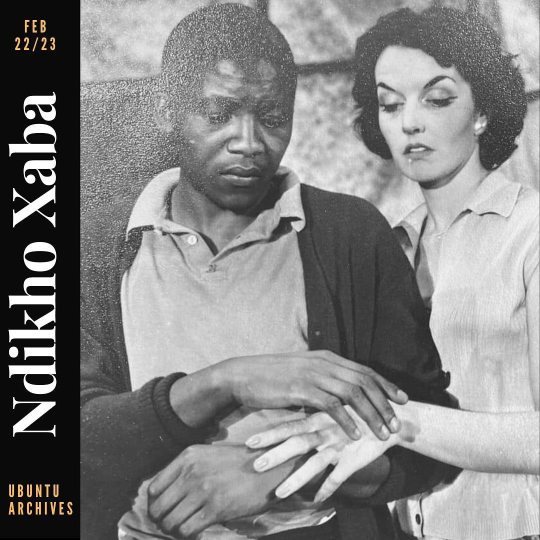
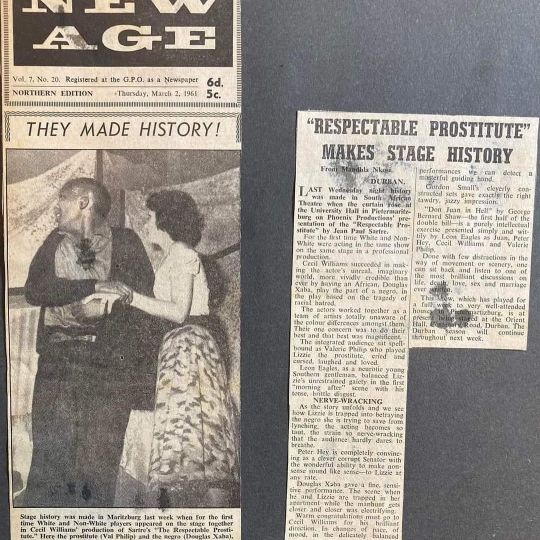
1 note
·
View note
Text
Pharoah Sanders, Jazz Saxophonist Great, Has Passed Away At The Age of 81
“Pharoah Sanders, the jazz saxophonist who worked closely with John Coltrane and was a pioneer of the avant-garde movement, has died. He was 81 years old. No one played the tenor saxophone quite like Pharoah Sanders. When he blew his horn, it was as if he was a dragon breathing fire. He played it so loudly and with such a fierce intensity that what came out of his horn was a startlingly eerie howl, like a hurricane crossed with a flame-thrower; a sound that had a brawny and burning physical presence and yet oozed a sense of deep spirituality. ...”
udiscover (Video)
NY Times: Pharoah Sanders, Whose Saxophone Was a Force of Nature, Dies at 81
2015 December: Maleem Mahmoud Ghania With Pharaoh Sanders - The Trance Of Seven Colors (1994), 2016 January: Ptah, The El Daoud - Alice Coltrane & Pharoah Sanders (1970), 2016 November: Tauhid (1967), 2017 May: The Pharoah Sanders Story: In the Beginning 1963-1964, 2017 November: Let Us Now Praise Pharoah Sanders, Master of Sax, 2018 February: Anthology: You've Got to Have Freedom - Pharoah Sanders (2005), 2018 February: James Blood Ulmer & Pharoah Sanders - Live 2003, 2018 May: How Pharoah Sanders Brought Jazz to Its Spiritual Peak with His Impulse! Albums, 2019 January: Africa (1987), 2021 December: Promises - Floating Points, Pharoah Sanders and the London Symphony Orchestra, 2022 January: Live In Paris (1975) (Lost ORTF Recordings)

0 notes
Text
Pharoah Sanders, John Hicks, Curtis Lundy & Idris Muhammed – Africa
Pharoah Sanders, John Hicks, Curtis Lundy & Idris Muhammed – Africa
USA, 1988, avant-garde jazz
The saxophonist lightly wrestles with the ghost of his mentor Coltrane and succeeds in weaving the tendrils of the legend’s shadow into some easy-listening 80s jazz, demonstrating maturity in not needing to prove anything.

View On WordPress
1 note
·
View note
Audio
#jazz#avant-garde#avant garde#avantgarde#music#spotify#currently listening#pharoah sanders#saxophone#saxophonist#you've got to have freedom#africa#beat#beat generation#new beat#neo beat#beatnik
2 notes
·
View notes
Audio
VA - LA OLA INTERIOR Spanish Ambient & Acid Exoticism 1983-1990 (Les Disques Bongo Joe)
Following “La Contra Ola” (BJR015), Bongo Joe is pleased to present LA OLA INTERIOR, a compilation exploring the ambient side of the Spanish electronic music produced in the 80’s. It gathers musicians from various horizons and of many generations, who shared the desire to create an immersive soundscape and to combine electronic music with non-Western musical traditions. As a general rule, the Anglo-Saxon tropism did relate the spanish peninsula’s ambient music to the Balearic Sound, that is to say to the relaxing music played in Ibiza’s nightclubs. But this music takes place in the productive territory of experimental musics, and particularly in its two main breeding grounds: the tape recording underground and the independent musicians-producers scene.
Inseparable from the processes of self-publishing, distribution and exchange of music that were then taking place in Spain in an artisanal way, the vast underground movement of cassettes was divided between an "ethno-trance" combining industrial beats and oriental sounds on the one hand (Esplendor Geométrico, Miguel A. Ruiz / Orfeón Gagarin) and unclassifiable low-fi tinkerers on the other hand (Camino al desván, Eli Gras, Mataparda, Victor Nubla). Hyperactive, this scene is radical and strongly dominated by the hardest musical styles, but the ambient, influenced by the German Kosmische Musik and "krautrock", also develops here.
The second vein of Spanish ambient comes from some of the independent labels of the peninsula (DRO, GASA, El Cometa de Madrid, EGK) whose activity will mark the return of some of the most adventurous musicians-producers of the 70s. Some were influenced by American minimalism (Luis Delgado / Mecánica Popular, Suso Saiz, Javier Segura), others by Fourth-World Music conceived by Jon Hassell and Brian Eno (Finis Africae, Jabir). Having passed through folk, ancient, traditional or contemporary music, and being familiar with improvisation and studio techniques, these artists come from a mutant hippie culture, capable of phagocyting many musical styles from electronic ambient to ethnic improvisation and modal jazz.
These two scenes and generations that make up LA OLA INTERIOR intersect around a common interest in non-Western musical traditions. Their exploration may be that of the tribal origins of electronic rhythms or the Arab heritage of Spain. Above all, it is a dreamy exoticism, an immobile journey as the sounds, rhythms or instruments of these traditions are scrutinized by Western practices (avant-garde music, electronic technology). The result is a hybrid music, filtered and reinvented, neither Western nor extra-Western, with a pronounced taste for the fusion of opposites, which we have called "Acid Exoticism" because of its permanent search for trance or contemplation. Atmospheric, contemplative and serial, these musics still plunge us today into a sensorial journey, at the same time interior and distant, organic and technological, between exotic reminiscences and interior visions.
LA OLA INTERIOR brings together 20 little-known and innovative pieces from the golden age of Spanish electronic music.
Compilation Project & Notes : Loïc Diaz Ronda
Cover and Vinyl Pictures taken from the Film The Red & Blue Gods by Ben Russell (2005). Courtesy of the Artist.
This Compilation is dedicated to the Memories of Juan Alberto Arteche & Víctor Nubla.
10 notes
·
View notes
Text
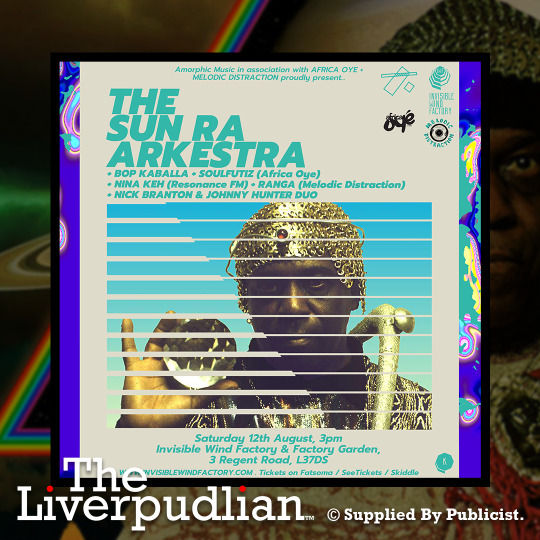
🎵 Amorphic Music in association with Africa Oyé and Melodic Distraction proudly present the legendary afrofuturist, avant-garde jazz musical ensemble, The Sun Ra Arkestra, live at the Invisible Wind Factory on Saturday the 12th of August 2023.
🎵 The Invisible Wind Factory will welcome guests into the Factory Garden from 3pm with live jazz, DJs and food all afternoon to build up for the main event starting at 7pm in their IWF's Main Hall, ready to welcome the otherworldly Sun Ra Arkestra.
🎵 The Full Line Up:
1️⃣ The Sun Ra Arkestra (Live Performance).
2️⃣ Bop Kaballa (Live Performance).
3️⃣ SOULFULTIZ (DJ — Africa Oyé).
4️⃣ Nina Keh (DJ — Resonance FM).
5️⃣ Ranga (DJ — Melodic Distraction).
6️⃣ Nick Branton & Johnny Hunter Duo (Live Performance).
🎵 Read the article on our website for the link to tickets: https://www.TheLiverpudlian.com/post/amorphic-music-in-association-with-africa-oye-melodic-distraction-host-legendary-sun-ra-arkestra


👉 Get all of the latest Scouse news, culture and events happening across the Liverpool City Region on TheLiverpudlian.com!
🔔 Turn notifications on so you never miss a post, story or video.
📲 Follow us on Instagram, Facebook, and YouTube to stay up-to-date on all of our posts!
📷 Image Credit: Supplied.
👋 The Liverpudlian on Social Media:
📰 The Liverpudlian Website.
📱 The Liverpudlian Instagram.
🧵 The Liverpudlian Threads.
🔗 The Liverpudlian Facebook.
🎥 The Liverpudlian YouTube.
📌 The Liverpudlian Pinterest.
🎙️ The Liverpudlian SoundCloud.
🐦 The Liverpudlian Twitter.
📷 The Liverpudlian Flickr.
⚙️️️ Trademark & Copyright 2023, The Liverpudlian, and/or its affiliated brands, unless credit is given otherwise. All Rights Reserved.
#the liverpudlian#theliverpudlian#liverpool#liverpool city region#liverpoolcityregion#liverpool city centre#liverpudlian#lcr#liverpoolcitycentre#scouse#afrofuturism#afrofuturistic#jazz#avant garde#sun ra#arkestra#sun ra arkestra
3 notes
·
View notes
Text
Wikipedia Aesthetics Guide (A)
Abstract Expressionism: New forms of abstract art usually characterized by gestural brushstrokes or mark-marking, and the impression of spontaneity
Acidwave: Fuzzy mix of psychedelia, funk, jazz, synthesized electronica, and whole band improvisation from eccentric artists defined primarily by drop base lines and squelching sounds of the Roland TB-303 electronic synthesizer-sequencer
Adventurecore: Relating to adventure, or the possibility of a great journey
Afrofuturism: Takes common science fiction elements and mixes in African traditions and fashion
Agejo: Substyle of Gyaru that is generally worn by a hostess, and focuses on glamour and femininity while having high sex appeal with a cute style and attitude
Amekaji: A comfortable, casual substyle of Gyaru that is bright, colorful, and inspired by the fictionalized, stereotypical idea of America
Androgynous: The combination of masculine and feminine characteristics, making them into an ambiguous form
Ane Gyaru: Substyle of Gyaru that is mature and classy with a rebellious twist
Angelcore: Girly grunge with holy vibes
Angurakei: Takes traditional Japanese culture and dress, and mixes it with spikes, chains, heavy makeup, and black colors
Animecore: Revolves around the visual styles of Japanese anime and manga, particularly from the 1990s and early 2000s
Ankara: 100% cotton fabric with vibrant colors, and tribal-like patterns traditionally associated with Africa
Anti-fashion: Umbrella term for various styles of dress which are explicitly contrary to the fashion of the day
Arcadecore: Relating to the feeling of being a kid in an arcade during the 80s or 90s; seen as a crossroad of kidcore and vaporwave
Arcaneism: Relating to the dark and mysterious aspects of the world, such as: horror movies, old books, witchcraft, thunderstorms, poetry, astrology, and nature
Art Academia: Based on reading classical novels, writing books, and intellectually admiring works of art in general
Art Deco: Bold, contrasting colors are used in often angular and streamlined geometric forms and clean lines
Art Hoe: Involves a love for art, flowers, nature, and usually values diversity and vintage styles
Art Mom: A wholesome sister to the Art Hoe aesthetic, in which someone loves art as their own child
Artistiekelingen: Involves philosophical young adults interested in French culture and literature, who’re known to hang out in the streets, discuss art and literature, and visit underground jazz clubs (personal favorite)
Atompunk: Centers around the view of the future from the 1950s, think of the Jetsons
Avant-garde: Innovative and experimental concepts or works that are often seen as “before its time”
#aestheitcs#aesthetic#guide#dictionary#a#anvant-garde#atompunk#artistiekelingen#art mom#art hoe#art deco#art academia#arcaneism#arcadecore#anti-fashion#ankara#animecore#angurakei#angelcore#ane gyaru#androgynous#amekaji#agejo#afrofuturism#adventurecore#acidwave#abstract expressionism#directly copied from wikapedia#feel free to correct me if i did ur aesthetic dirty lol#definition
113 notes
·
View notes
Text
The word negrophilia is derived from the French négrophilie that means love of the negro. It was a term that avant-garde artists used amongst themselves to describe their passion for black culture. During 1920-1930s Paris, negrophilia was a craze when to collect African art, to listen to jazz, and to dance the Charleston, the Lindy Hop or the Black Bottom, were signs of being modern and fashionable. Sources of inspiration were inanimate African art objects (l'art nègre) that found their way into Paris as a result of colonial trade with Africa as well as live performances by African-Americans, many of whom were ex-soldiers remaining in European cities after World War I, who turned to entertainment for a source of income. Perhaps the most popular revue and entertainer during this time was La Revue Nègre (1925) starring Josephine Baker.
This interest in exotic cultures had already been established within France due to the regular expositions the country held to showcase the objects and people of the French colonies. The fascination with specifically black culture and the "primitivised" existence associated with it flourished in the combined aftermath of the First World War (1914–1918) and the 1931 Colonial Exposition when artists yearned for a simpler, idyllic lifestyle to counter modern life's mechanistic violence. Avant-garde artists recognised for their negrophilia interests include poet Guillaume Apollinaire, artists Tzara, Man Ray, Paul Colin, surrealists George Bataille and Michel Leiris, and political activist Nancy Cunard
4 notes
·
View notes